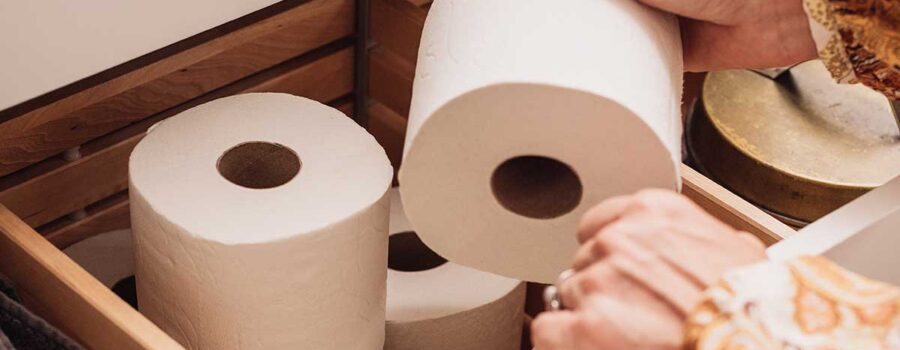You know that roll of white stuff we all panic-buy when the supermarket shelves start looking bare? It turns out, there’s more to toilet paper than meets the eye, and it’s not all good news.
Shocking List of Chemicals Found in Toilet Paper
Let’s dive into what’s really in that roll. You might think the fluffier and whiter it is, the better, right? Well, not exactly. That perfect white roll might be hiding some not-so-great secrets. Here’s the scoop:
- Chlorine: This is what gives TP that ultra-white look. But, it’s not so great for your skin, especially in sensitive areas. It can also up the ante on infections for some folks.
- Furans and Dioxins: These nasties are byproducts of the bleaching process. Think liver issues, skin problems, and even cancer. Yikes!
- Formaldehyde: Yes, the stuff from science class. It keeps your TP from falling apart when wet but can also cause rashes, breathing issues, and eye irritation.
- Petroleum-based Oils and Paraffin: Added for softness and scent, but they’re not doing your skin any favors. Plus, they’re not great for your health in the long run.
- Fragrances: Sure, they make your TP smell nice, but they can mess with the natural balance down there, leading to irritation and discomfort.
- Bisphenol A (BPA): Often found in recycled TP, BPA can mess with your hormones and cause a whole host of health issues.
And here’s the kicker – these chemicals can get absorbed through your skin, especially in those absorbent areas. So, using chemically-loaded TP isn’t just a surface issue.
The PFAS Problem in Toilet Paper
PFAS, or “forever chemicals,” are another hidden danger in some toilet paper brands. These bad boys can stick around in your body and the environment for a really long time. We’re talking about some serious health issues like cancer and fertility problems. And guess what? They’ve been found in some popular brands, even the ones that claim to be eco-friendly.
The Environmental Impact of Traditional Toilet Paper
It’s not just our bodies that are taking the hit; the planet’s feeling it too. Traditional toilet paper manufacturing is a bit of an environmental nightmare. Here’s why:
- Deforestation: Say goodbye to trees, hello to climate change and habitat destruction.
- Water Usage and Pollution: Loads of water gets used and polluted in the process.
- Energy Consumption: Making TP requires a lot of energy, which means more greenhouse gases.
But don’t worry, it’s not all doom and gloom. There’s a greener option: bamboo toilet paper. It’s a quick grower, doesn’t need much water, and is way kinder to the environment.
Hygienic and Health-Friendly Alternatives to Toilet Paper
Now, let’s talk solutions. Bidets are awesome. They’re big in many parts of the world and for good reason. They’re gentle, reduce irritation, and keep things clean without the need for TP. Can’t install a full bidet? No problem! Bidet attachments or handheld sprayers are great alternatives. Just make sure you’re using filtered water to avoid any nasties.
Prefer the traditional route? Bamboo toilet paper is your friend. It’s kind to your skin, the environment, and is totally biodegradable. Brands like Bumboo are doing it right, making sure their rolls are sustainably sourced and helping with reforestation efforts too.
Summary
So there you have it. Our trusty toilet paper might not be as innocent as we thought. But fear not! There are plenty of alternatives out there that are better for our health and the planet. Whether it’s switching to a bidet or choosing bamboo TP, we’ve got options. It’s all about making those small changes that can add up to a big difference. Here’s to a healthier you and a happier planet!
References:
- Majerovich, Jo Ann et al. “Chronic vulvar irritation: could toilet paper be the culprit?.” Canadian family physician Medecin de famille canadien vol. 56,4 (2010): 350-2.
- Peivasteh-Roudsari, Leila et al. “Origin, dietary exposure, and toxicity of endocrine-disrupting food chemical contaminants: A comprehensive review.” Heliyon vol. 9,7 e18140. 11 Jul. 2023, doi:10.1016/j.heliyon.2023.e18140
- “Formaldehyde and Cancer Risk.” National Cancer Institute, www.cancer.gov/about-cancer/causes-prevention/risk/substances/formaldehyde/formaldehyde-fact-sheet. Accessed 19 Dec. 2023.
- “Mineral Oils: Untreated and Mildly Treated – Cancer-Causing Substances.” National Cancer Institute, www.cancer.gov/about-cancer/causes-prevention/risk/substances/mineral-oils.
- Pastor-Nieto, María-Antonia, and María-Elena Gatica-Ortega. “Ubiquity, Hazardous Effects, and Risk Assessment of Fragrances in Consumer Products.” Current treatment options in allergy vol. 8,1 (2021): 21-41. doi:10.1007/s40521-020-00275-7
- Santoro, Antonietta et al. “Neuro-toxic and Reproductive Effects of BPA.” Current neuropharmacology vol. 17,12 (2019): 1109-1132. doi:10.2174/1570159X17666190726112101
- Nicole, Wendee. “A question for women’s health: chemicals in feminine hygiene products and personal lubricants.” Environmental health perspectives vol. 122,3 (2014): A70-5. doi:10.1289/ehp.122-A70
- Segedie, Leah. “How Toxic Is Your Toilet Paper? Investigation of Brands.” MAMAVATION, 17 Nov. 2023, www.mamavation.com/brands/toilet-paper.html.
- Ashley Jordan, Shelley Vinyard. “The Issue with Tissue.” Be a Force for the Future, 19 Sept. 2023, www.nrdc.org/resources/issue-tissue.








